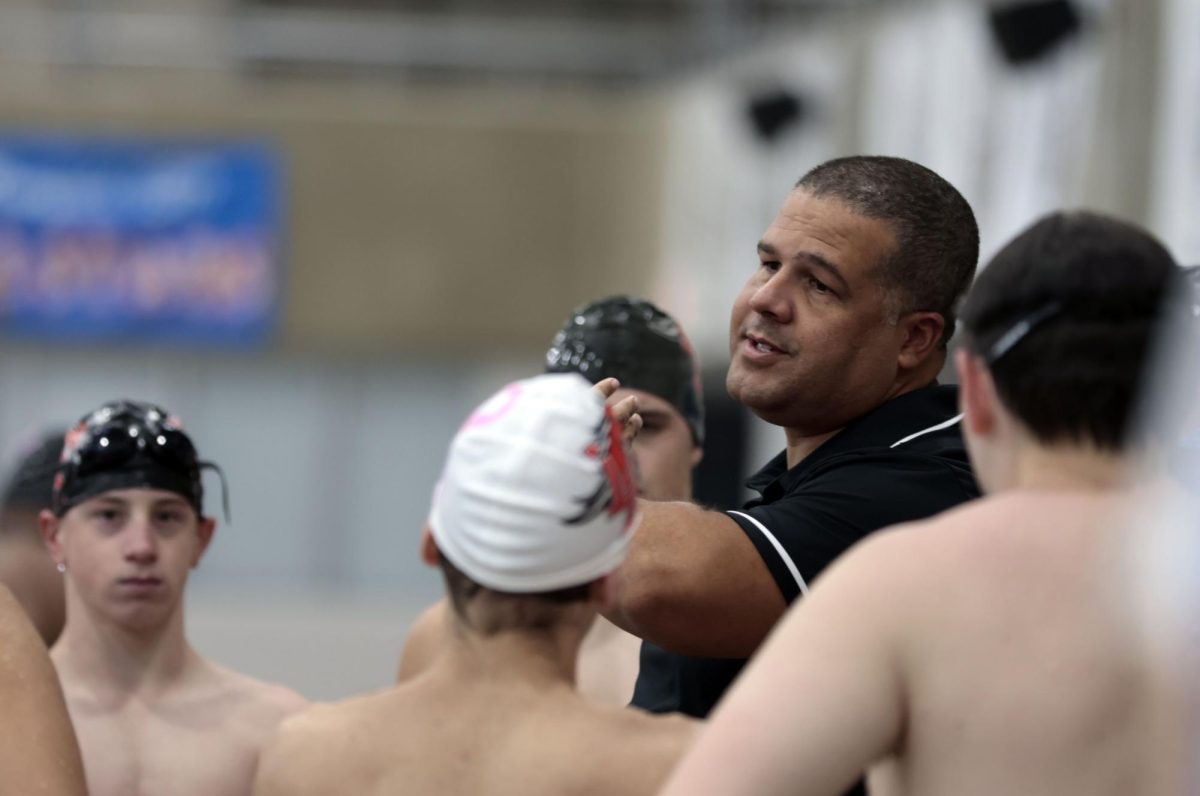Gallon water jugs, large arms, even larger legs. This is the average look for a bodybuilder, but no bodybuilder wants to look average. When walking around the hallways, students question what kind of work it takes for them to get this physique.
When training consistently, women can expect to gain around one pound of muscle per month and men around two. While you work out, the fibers in your muscles are damaged and the body repairs them, resulting in muscle growth. When working out you can’t expect to get big instantly; five pounds of fat is much bulkier and lumpier than five pounds of muscle. Because of the size of fat when you start working out you may notice you lose more size and weight because you are burning off this lumpy fat.
“It’s a journey, there’s no destination,” Coach Chad Redwine said. “Progress is not something that happens overnight.”
Tennis Coach Chad Redwine also bodybuilds and trains for an upcoming competition on Dec. 2 in Arlington. Redwine lifts for an aesthetic look rather than sheer strength or size because he is competing in the physique category. Usually, he does 15-20 minutes of cardio then breakfast. Then after school, Redwine puts in two hours in the gym.
“Working out and lifting is the easy part because you have your rep range,” Redwine said. “There is no imagination to it. You know, you just go and do it.”
For beginners, he recommends meals consisting of eggs, turkey, chicken, fish, red potatoes, oatmeal, and cream of rice. He also recommends supplements not being their first priority.
“Eat, eat, eat lots of food,” Redwine says for beginners. “The diet is the most challenging part, it’s more about food than it is about supplements.”
Senior Jonah Pedroza’s, a powerlifter and varsity football player, lifting journey started during quarantine for fun. However, it quickly became a strategy to help him grow strong for football.
“The easiest split for beginners is a push, pull, legs split. So day one you do push, it’s a lot of chest, triceps, and shoulders. Pull would be your entire back, your biceps and a little bit more shoulders, and then legs. That’d be the easiest way to gain muscle,” Pedroza said.
A common misconception among teenagers is they need to put in a lot of time in the gym. They might say that they don’t have the time or it’s going to take hours and hours to get bigger.
“There’s time to work out if you really want it,” Pedroza said. “If you’re just starting out, commit to 7 hours a week, if you workout 6 days a week, that’s a little over an hour a day.”
When beginners first decide to commit to the grind and to the lift, they have this misconception that everyone will be looking at them and judging them, however, this is rarely the case. Everyone has to start somewhere, most lifters are understanding because they remember when they were a beginner too.
“Just go do it,” Pedroza said. “No one is going to judge you for wanting to better yourself.”
When going to the gym as a beginner you will see people that are bigger than you. Within 1-2 months, most likely, you won’t look exactly like these men/women. Social media can skew the perception of young lifters.
“Some ‘influencers’ think they are contributing to the industry but they’re not,” Pedroza said. “Don’t believe everything you see on social media.”
At the end of the day, you only get out of it what you put in. No one can make you work out, you have to want it. Don’t give up, you will see progress if you keep pushing.
“You might hate it during the workout, it might be the worst workout of your life, but you never going to regret a workout,” Pedroza said “You’re never gonna have the physique you want, but that’s what drives you better.”



![Senior Jonah Pedroza prepares for a powerlifting meet on Feb. 16. Pedroza began powerlifting as a pastime during quarantine, and now competes at powerlifting meets throughout the district. [File Photo]](https://therideronline.com/wp-content/uploads/2023/11/Powerlifting_02162023_carolineschlieker_093-1200x856.jpg)







